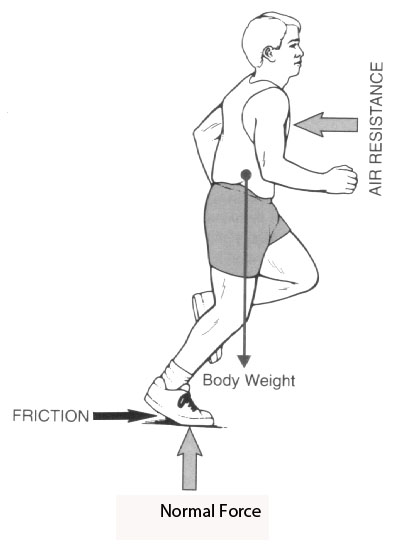Banked Tracks for Turning Isaac Physics
Link: https://isaacphysics.org/questions/phys_linking_17_q4?board=1aad4219-4958-454a-8c05-e3c0a226aebe&stage=a_level
Unsure what I am going wrong with - is my diagram correct?
Unsure what I am going wrong with - is my diagram correct?

Here is my working
Original post by mosaurlodon
Here is my working

Here is my working
Your free-body diagram is incorrect.
- You are told in the question, "The magnitude of the frictional force on the car pointing down the slope…” but your frictional force is pointing upward.
- We do not usually show centripetal force in a free-body diagram as it is a resultant force.
The direction of the centripetal force is incorrect, it should be in the horizontal direction.
The coefficient of friction is not required in this question.
Thank you! I've managed to get the answer now - but I have a couple of qs.
1) Shouldn't frictional force always oppose and act in the opposite direction of another force - in this question which force is it opposing as there are none that are pointing up the slope.
2) Why does the centripetal force point horizontally - I thought it always points towards the centre of the rotation.
1) Shouldn't frictional force always oppose and act in the opposite direction of another force - in this question which force is it opposing as there are none that are pointing up the slope.
2) Why does the centripetal force point horizontally - I thought it always points towards the centre of the rotation.
Original post by mosaurlodon
Thank you! I've managed to get the answer now - but I have a couple of qs.
1) Shouldn't frictional force always oppose and act in the opposite direction of another force - in this question which force is it opposing as there are none that are pointing up the slope.
…
1) Shouldn't frictional force always oppose and act in the opposite direction of another force - in this question which force is it opposing as there are none that are pointing up the slope.
…
I am not sure why you have such thinking.
Go back to your textbook definition of friction and then read the question that you have asked to see if it makes sense. If it does, let me know how it makes sense.
Original post by mosaurlodon
…
2) Why does the centripetal force point horizontally - I thought it always points towards the centre of the rotation.
2) Why does the centripetal force point horizontally - I thought it always points towards the centre of the rotation.
I am not sure what you mean by centre of rotation.
Original post by Eimmanuel
I am not sure why you have such thinking.
Go back to your textbook definition of friction and then read the question that you have asked to see if it makes sense. If it does, let me know how it makes sense.
I am not sure what you mean by centre of rotation.
Go back to your textbook definition of friction and then read the question that you have asked to see if it makes sense. If it does, let me know how it makes sense.
I am not sure what you mean by centre of rotation.
With q1) I misunderstood the definition - Friction always acts in the direction opposite to that of the direction of the object in motion. My misunderstanding was that it acts in the direction opposite another force - which it doesn't, it only opposes the direction of motion, which in this case is the car 'leaving' the track.
With q2) I have drawn a diagram that labels my current thinking. The green centripetal force is in the correct direction, whereas the red centripetal force is incorrect and was what I thought the direction of the centripetal force was (as it's pointing towards the 'centre of rotation'). After research, I realised the centripetal force was always acting against the axis of rotation, so doesn't always point towards the 'centre of rotation', which is why the correct direction for the centripetal force is horizontal.
Original post by mosaurlodon
With q1) I misunderstood the definition - Friction always acts in the direction opposite to that of the direction of the object in motion. My misunderstanding was that it acts in the direction opposite another force - which it doesn't, it only opposes the direction of motion, which in this case is the car 'leaving' the track.
Be careful about the definition of friction that you have written.
If we see the diagram below, the friction is acting in the direction of motion of the person.

Original post by mosaurlodon
With q2) I have drawn a diagram that labels my current thinking. The green centripetal force is in the correct direction, whereas the red centripetal force is incorrect and was what I thought the direction of the centripetal force was (as it's pointing towards the 'centre of rotation'). After research, I realised the centripetal force was always acting against the axis of rotation, so doesn't always point towards the 'centre of rotation', which is why the correct direction for the centripetal force is horizontal.
I hope you understand what is the axis of rotation as you seem to use it quite loosely. The car in this problem is moving in a circular motion NOT rotating.
Are you sure that “centripetal force was always acting against the axis of rotation, so doesn't always point towards the 'centre of rotation'”?
I'll try to change my terminology because I think it's causing confusion - my mistake for calling it rotation not motion.
Well from what I've been taught, the centripetal force always points towards the centre of whatever circular motion it's travelling in - I don't see why it wouldn't in this scenario.
I guess in a 'banked turn' it confused me into thinking the centripetal force points towards the 'centre', when really it points towards the 'axis'.

Well from what I've been taught, the centripetal force always points towards the centre of whatever circular motion it's travelling in - I don't see why it wouldn't in this scenario.
I guess in a 'banked turn' it confused me into thinking the centripetal force points towards the 'centre', when really it points towards the 'axis'.
Original post by mosaurlodon
I'll try to change my terminology because I think it's causing confusion - my mistake for calling it rotation not motion.
Well from what I've been taught, the centripetal force always points towards the centre of whatever circular motion it's travelling in - I don't see why it wouldn't in this scenario.
I guess in a 'banked turn' it confused me into thinking the centripetal force points towards the 'centre', when really it points towards the 'axis'.

Well from what I've been taught, the centripetal force always points towards the centre of whatever circular motion it's travelling in - I don't see why it wouldn't in this scenario.
I guess in a 'banked turn' it confused me into thinking the centripetal force points towards the 'centre', when really it points towards the 'axis'.
Initially, you said “centripetal force was always acting against the axis of rotation” and in post #9 you changed it to “centripetal force always points towards the centre of whatever circular motion it's travelling in”.
Find your English language teacher or Physics teacher and ask them if there is any difference in using acting against and acting towards.
Quick Reply
Related discussions
- Banked Tracks For Turning
- Banked Tracks for Turning 17.5
- Isaac Physics SPC
- Question Banks
- Isaac Physics Lorentz Transform 2 Help
- How To Get An Oxford Engineering Offer: Chapter 3 - Super-curricular and Resources
- Physics A Level question help
- Proving Financial Dependancy
- Note-taking methods for Physics
- Isaac physics answers
- supercurriculars for engineering + general tips and advice?
- Circular motion
- Isaac Physics SPC Summer School
- Imperial College Mechanical Engineering Exam/Tes
- What online resources can I use to guarantee I get an A in A-Level AQA Physics?
- Isaac Physics C4a.9
- What are these a levels and their courses like?
- Help on Isaac Physics Kinematics lvl 4: The Basketball Player (Part D)
- Tips for A*s?
- Any good sci-fi books? :)




